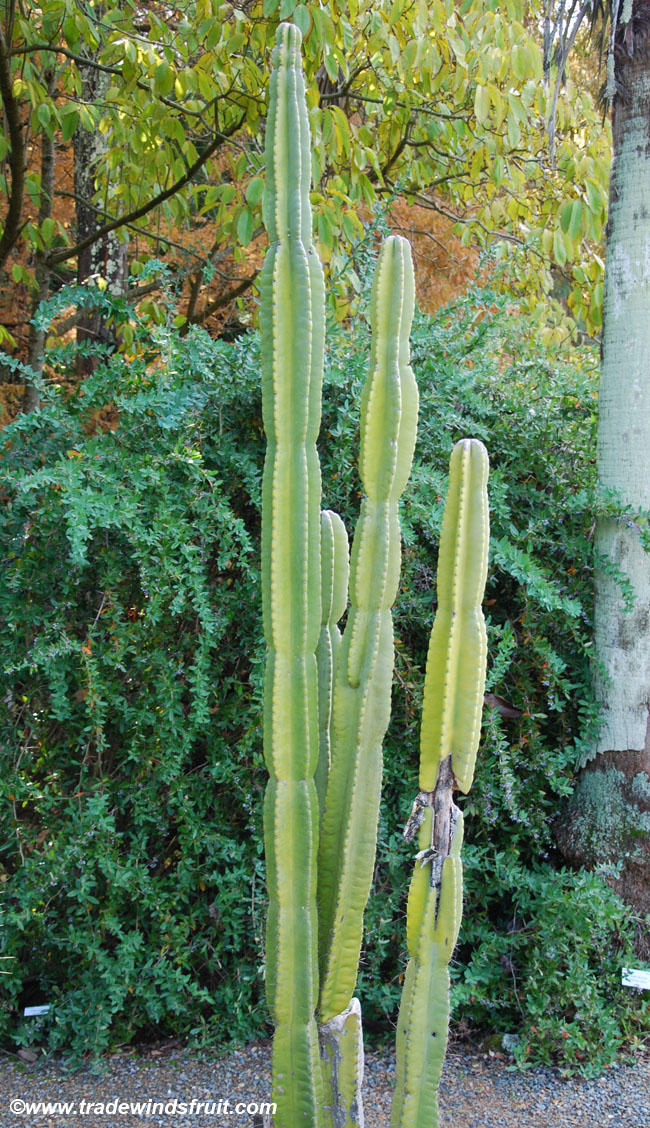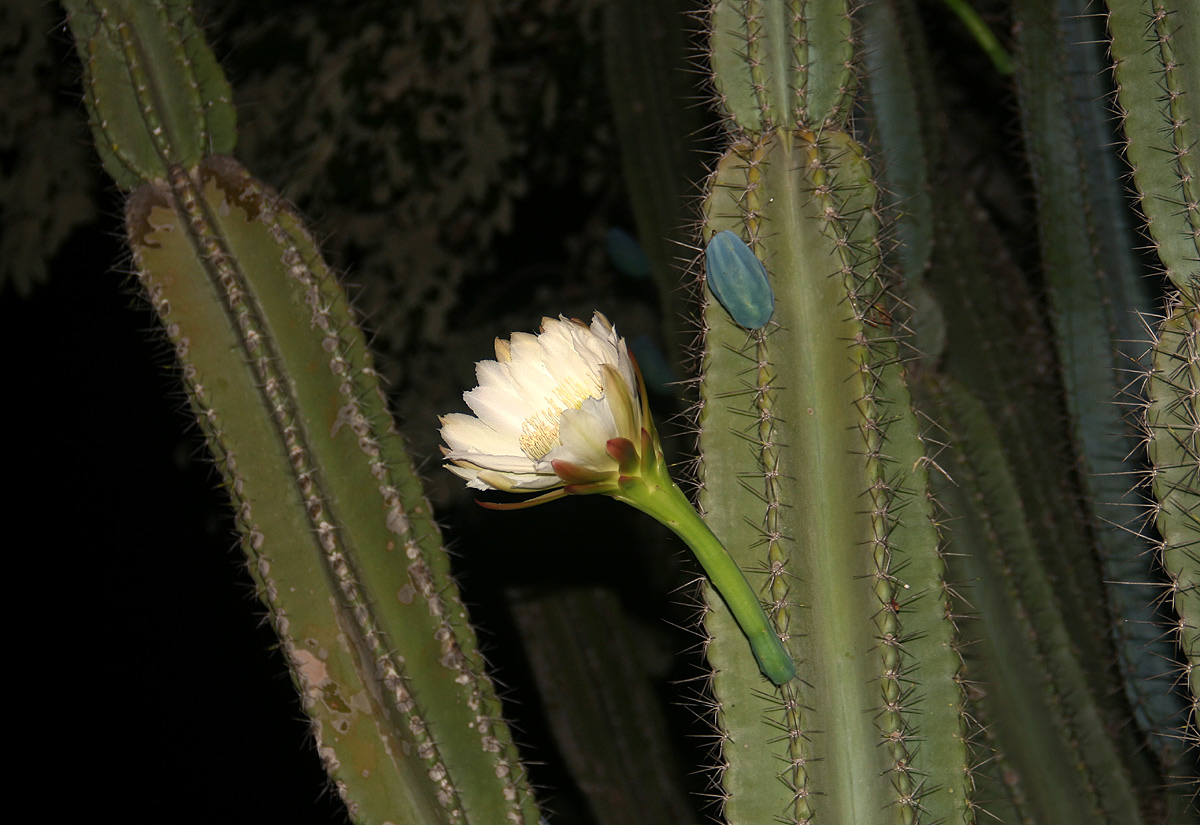Cereus jamacaru
Cereus jamacaru
Cereus jamacaru is a flowering plant in the genus Cereus from the cactus family ( Cactaceae ). Its botanical name is derived from a language customary in Brazil designation for the type. There it is also called " Mandacaru " or " Mandacaru de boi ".
Description
The plants are stem succulent trees ( to 15 m) reach about 9 m in height and form large crowns. The stems reach the age diameter of 35 cm and more. The segmented branches are four-to sechsrippig, sometimes up zehnrippig by intervening at the age ribs. The initially about 3.5 cm high ridges are higher with advancing age. On them are at a distance of 2 to 4 cm yellow to brown areoles. These contribute about 15 to 20 yellowish to brownish spines, which are divided into 7 to 9 spines and 6-13 central spines. Not infrequently, the total number of spines is achieved only in the course of many years. The thorns late formed are particularly coarse and up to 10 cm long.
The formed from the areoles, at night opened flowers are up to 25 cm long. The outer bracts are brownish to pale green, the inner are white. After fertilization occur oval to pear-shaped fruit of about 6 cm diameter and 12 cm length. This stain carmine to coral red when ripe and tear along to. Inside the fruit are the matt black, about 3 mm seeds in a juicy, white flesh.
Distribution, systematics and hazard
Native to Brazil Type is divided into two subspecies.
- Cereus jamacaru subsp. jamacaru is the typical subspecies described above. It grows within a fairly large area in the Brazilian states of Piaui, Ceara, Rio Grande do Norte, Paraiba, Pernambuco, Alagoas, Sergipe, Bahia and Minas Gerais. There they settled mostly stony soils in the area of Caatinga. From cultivation originated and then feral plants are also found outside of the typical distribution area.
- Cereus jamacaru subsp. calcirupicola ( F.Ritter ) NPTaylor & Zappi (synonym Piptanthocereus calcirupicola F.Ritter ) is only 5-6 m tall trees with fewer and shorter spines in Minas Gerais. This subspecies grows mainly on limestone cliffs.
In the Red List of Threatened Species IUCN, the type is known as " Least Concern ( LC) ," ie, than not led at risk. The subspecies were not recorded separately.

/cereus_jamacaru_01.jpg)







